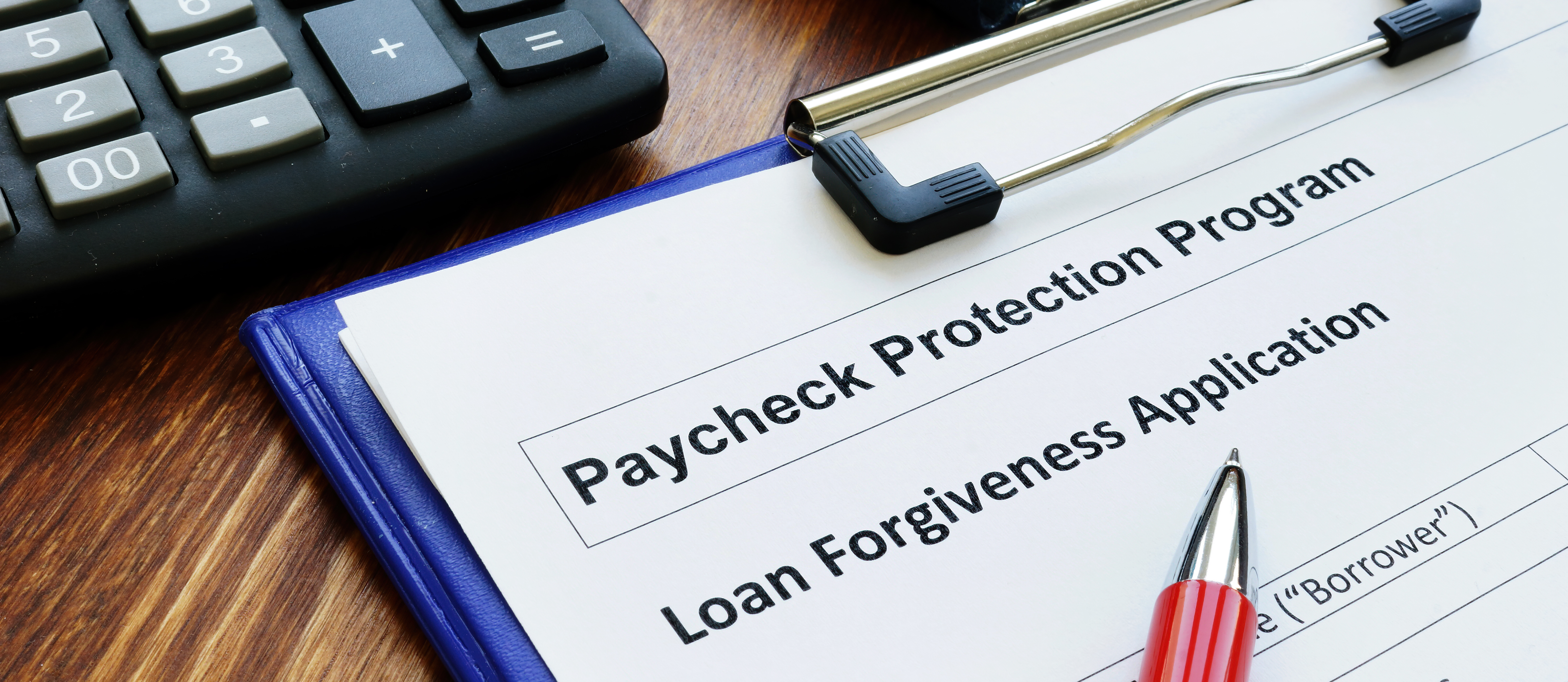Paycheck Protection Program Loan Forgiveness
Paycheck Protection Program Loan Forgiveness

The Economic Aid Act reauthorized the Small Business Administration (SBA) Paycheck Protection Program (PPP) through March 31. On January 19, 2021, SBA issued Interim Final Rules concerning forgiveness and review of first and second draw loans made under PPP.
The full PPP loan principal and any accrued interest can be forgiven. The borrower will not be responsible for any loan payment if the loan proceeds are used for eligible expenses while employee and compensation levels are maintained during the covered period.
The covered period begins when loan proceeds are disbursed and ends on any date selected by the borrower between 8 and 24 weeks after the date the loan is disbursed.
Eligible Expenses
- Payroll costs during the covered period must be at least 60 percent of total eligible expenses. Self-employed borrowers may use a combination of employee payroll costs and “owner compensation replacement.” Self-employed borrowers without employees use owner compensation replacement for payroll costs.
The amount of forgiveness will be reduced if payroll cost is less than 60 percent of total eligible expenses. For example, if payroll costs equal only 50 percent of the loan then the maximum forgiveness possible is 90 percent.
Payroll costs are prorated for the forgiveness period.
Examples: for an 8-week covered period a maximum of $15,385
for a 24-week covered period a maximum of $46,154
-
- Employee payroll costs include salary, wages, and tips as well as health care expenses, retirement contributions, state taxes, and unemployment. Applies to employees whose principal place of residence is in the U.S. Qualified wages used in determining the Employer Retention Credit are not eligible for forgiveness.
- Owner compensation replacement is the difference between gross income and employee payroll costs (if any) for the year used in the loan application. The maximum amount is $20,833 per individual in total across all businesses.
- Non-payroll costs. Up to 40 percent of eligible expenses may come from the following:
- Interest on business loans incurred before February 15, 2020, but not principal.
- Business rent on leases in force before February 15, 2020.
- Business utilities on service contracts begun before February 15, 2020.
- Goods that are essential to business operation ordered before the covered period (before or during the covered period if perishable goods).
- Certain business software or cloud computing services.
- Covered worker protection expenditures related to COVID–19.
- Refinancing an SBA EIDL loan made between January 31, 2020 and April 3, 2020
The above expenses, except owner compensation replacement, should be deductible business expenses. Payroll costs are considered paid when paychecks are distributed or an electronic transaction takes place. Payroll costs during the last pay period of the covered period are eligible for forgiveness if paid on or before the next regular payroll date.
Reductions to Loan Forgiveness Amount
For PPP loans based on payroll cost, the amount of forgiveness may be reduced if there is a reduction in employees or salaries during the covered period. The reduction is based on the drop in full-time equivalent employees or salary and wages. There are safe harbors and exemptions from these reductions. See PPP Interim Final Rule section IV.3. Most loans of $50,000 or less are exempt from reductions to the loan forgiveness amount.
What Must Be Submitted for Forgiveness
A loan forgiveness application may be submitted when all of the loan proceeds have been spent. It must be submitted within 10 months after the last day of the maximum 24 week covered period.
If only a portion of the loan is forgiven, or if the forgiveness request is denied, the borrower must begin paying principal and interest on the remaining amount of the loan.
For loans of $150,000 or less submit SBA Form 3508S Loan Forgiveness Application to the lender. No documentation is required unless the forgiveness is being requested along with an application for a Second Draw PPP Loan.
Loans over $150,000 require the following documentation to be included with the Loan Forgiveness Application:
- State quarterly and individual wage reports and Form 941/943.
- Records of business rent, utilities, interest, and other authorized expenses the loan was used for. Records may include cancelled checks or other verification of payment.
All borrowers must retain records that prove compliance with PPP requirements for four years (employment records) or for three years (other records). SBA may audit or review these loans and access any records the borrower is required to retain
SBA May Review Loan
SBA may review any PPP loan, including loans of $150,000 or less, to check whether a borrower is eligible, calculated the loan amount correctly, used loan proceeds for the allowable uses, and is entitled to loan forgiveness in the amount claimed.
See the earlier article on Paycheck Protection Program Updates.
SBA Interim Final Rule on PPP Loan Forgiveness:
The Kentucky SBDC continues to keep up-to-date on these and many other small business issues. For more information go to https://kentuckysbdc.com/coronavirus/.
Author(s) Contact Information:
Management & Finance
